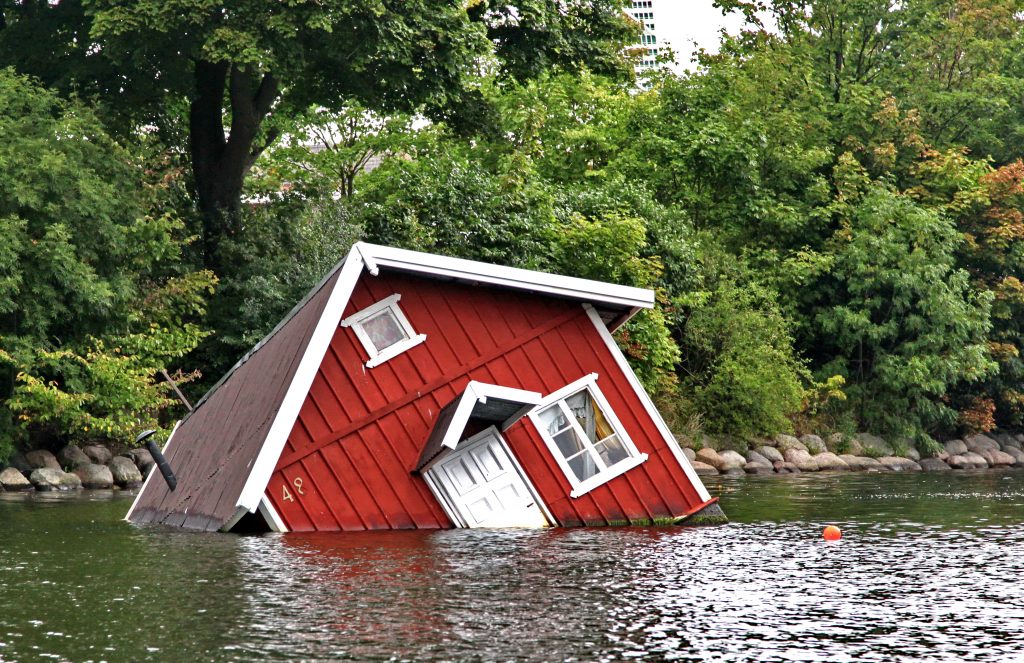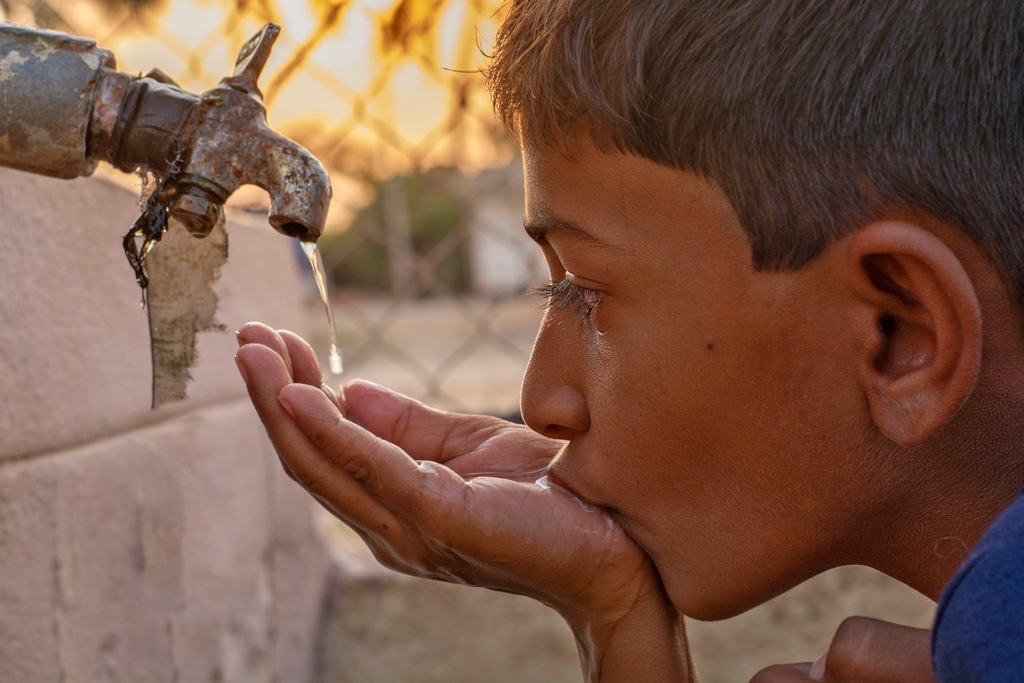Not Enough or Too Much


Between the ravages of protracted drought and devastation of widespread flooding, the summer of 2022 will be remembered as a season of extremes. Besides realizing the obvious point that weather that is either too dry or too wet is dangerous, these crises illustrate the need for investment in, and commitment to, long-term infrastructure solutions.
By Eric Herman
It’s a stark contrast of tragic and epic proportions. While much of the U.S. Southwest is gripped by drought, the Midwest has been hit with devasting rains and flooding. Although diametrically opposed, these extremes both point out the importance of sustaining infrastructure necessary to ensure an adequate supply of potable water, and illustrate what can happen when those systems start to break down.
The drought is a slow-moving catastrophe that has lingered for decades, sustaining growing fears of a future without adequate water supplies, and the accompanying threats to our ability to generate electricity, grow crops, drink tap water without boiling it first, and fight fires. The implications for business sectors such as the watershaping and landscaping industries are widespread and well-known.
By contrast, floods are sudden calamities that bring communities to their knees as swelling rivers crest their banks and lay waste to surrounding areas. People die, properties are damaged and destroyed, and diseases spread.
Ironically, both types of disastrous events can and do result in water shortages. Most recently in Jackson, Miss., flooding has caused the systemic breakdown of the city’s water utility. At this writing, more than 150,000 people are without drinkable tap water, with no immediate relief in sight. It’s a life-threatening crisis that has resulted from a combination of torrential rainfall and decades of neglect.
As has been widely reported, Jackson’s water supply has been on the ragged edge of complete dysfunction for years, as the city has lacked funds to upgrade its aging treatment and water delivery systems. Prior to this summer’s flooding, the city was already under a boil-water edict, a water-quality problem that has been widely compared to the Flint, Mich. calamity. In some ways, the Jackson crisis is also reminiscent what happened in Louisiana during hurricane Katrina. In that case, decades of neglecting the levee system, along wit depletion of critical wetlands resulted in a disaster that forever reshaped the region. As the saying now goes, it was a natural disaster and a manmade catastrophe.
Of course, water insecurity is only relatively new here in the U.S. and other industrialized nations. Internationally, according to UNICEF and the United Nations, nearly 3 billion people face intermittent water shortages, while well over one billion live in a constant state of water insecurity. It is a problem of existential proportions.
Back in Jackson, with its primary treatment plant offline due to flooding, we are catching a glimpse of what it looks like when a major city actually runs out of water. Emergency delivery and distribution of bottled water has been a lifeline resulting in people waiting hours to avoid dying of thirst. There is inadequate water to flush toilets and regular bathing is impossible for many. Schools are once again shut down, not because of the pandemic, but because they cannot function without potable water. The city issued a recommendation that residents shower with their mouths closed.
This is what water insecurity looks like in the U.S. It’s a public health crisis that effectively disables an entire city’s ability to function. Aside from the immediate threat to human health, the economic impact will be significant if not outright devastating. Essentially any industry that relies on the ready supply of water is brought to a halt. From manufacturing to construction to hospitality to healthcare, all amounting to a soggy and potentially deadly standstill.
Jackson is not the only impacted city. The Associated Press reported on Aug. 18, the city of Las Vegas, NM, had approximately 30 days of fresh water left, the result of both drought and monsoonal rainfall that flooded its treatment plant.
Clearly, the solution lies in the long-term commitment, and political will, to invest in infrastructure. Aging water-treatment and delivery systems have led to continued water quality and supply issues with increased frequency. In the case of Jackson, this problem could have been avoided had city and state governments fought for infrastructure investment, a fact that’s been known widely for decades. Instead, the city has limped along with a distribution system that in places is more than 100 years old. It’s a crisis that gives new dimension to the old saying, “pennywise and pound foolish.”
In the west, the struggle for investment in measures such as new desalination plants and wastewater treatment, among other mega infrastructure projects, rages on, often mired in political paralysis.
There are no easy, quick or inexpensive answers to the dire threat posed by drought and flooding. It’s a set of problems that forces us to rise above partisan differences and build consensus, something at which our society has proven chronically inept.
I personally believe the solution starts with raised awareness of water treatment systems. We’ve lived in a time of seemingly unlimited abundance. Clean water comes out of the tap, and soiled water goes down the drain or is forever flushed away. Our mighty industrialized society has developed as it has largely because our water supply has been so reliable. So much so we don’t ever give it much thought. We haven’t had to.
Yet, when those systems break down, and the supply becomes unreliable, or non-existent, it’s easy to see that our modern world is a fragile house of cards. I personally can’t help but remember what is was like when people were hoarding toilet paper at the beginning of the pandemic. Now I shudder to think what the panic and desperation will be like when water turns off at the tap.
Fact is, the need for reliable water supplies is universal. Thirst knows no political ideology, race or religion. Whether or not we have the wisdom to address water supply issues in the long view obviously remains to be seen.
Opening photo by Jaroslav Moravick | Shutterstock, lower photo by Westbrook Productions | Shutterstock











